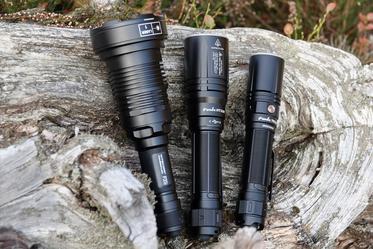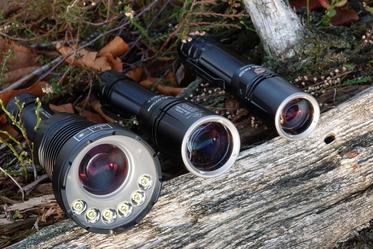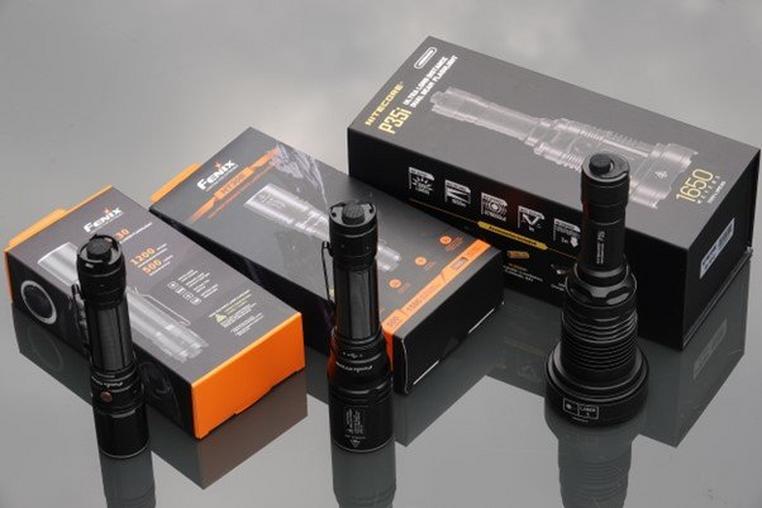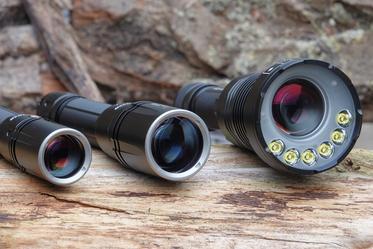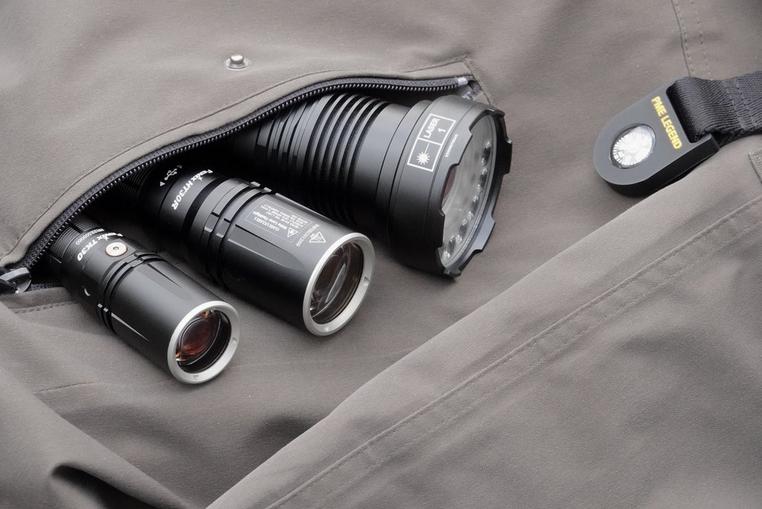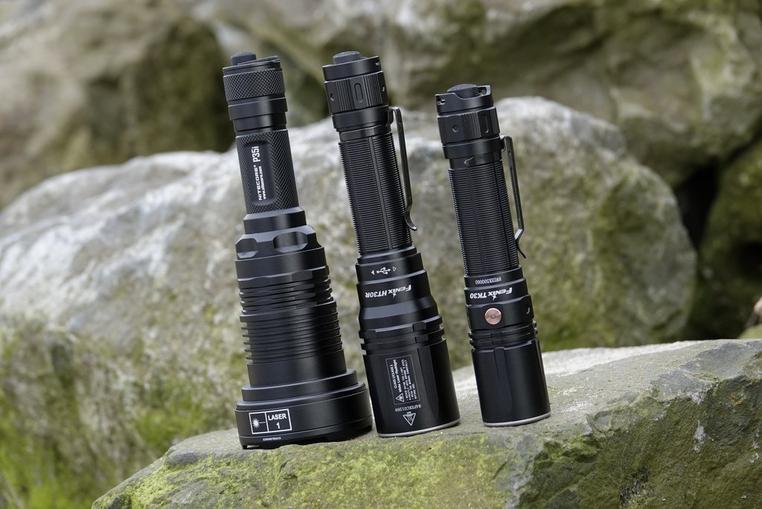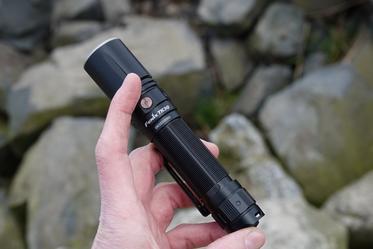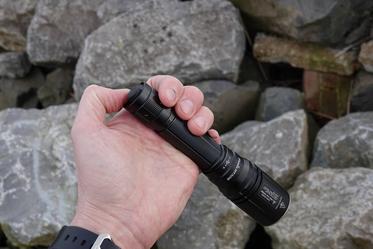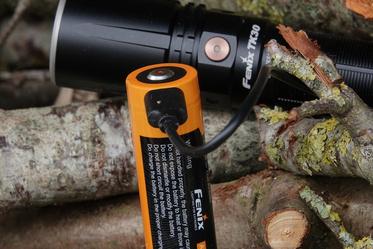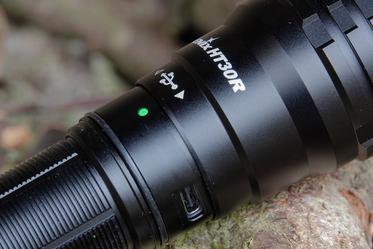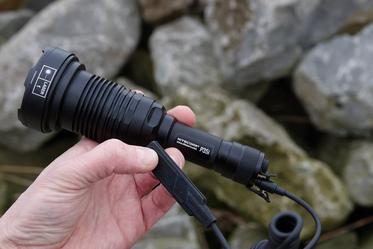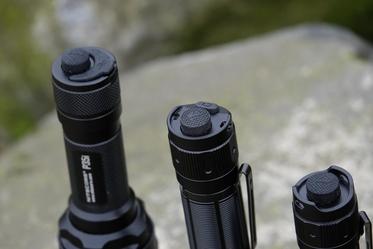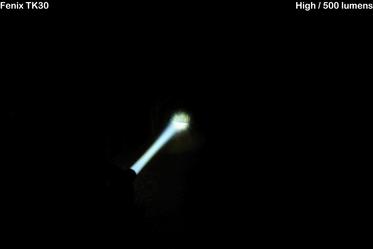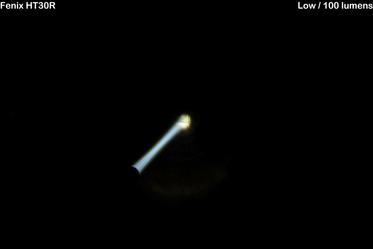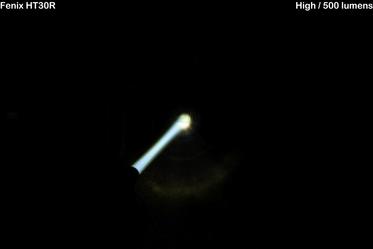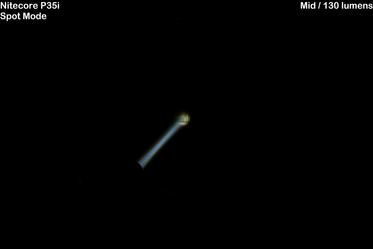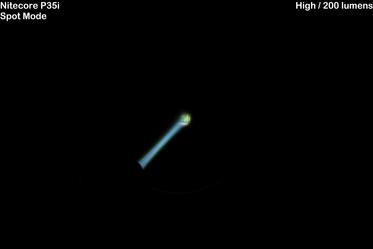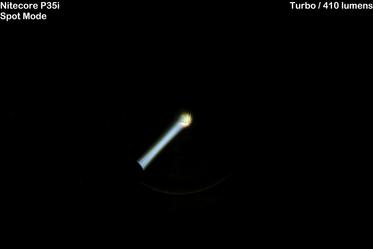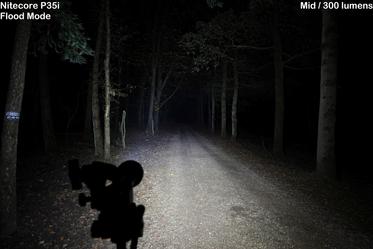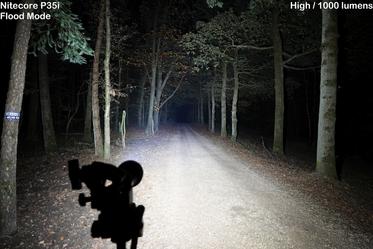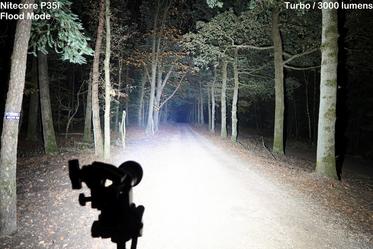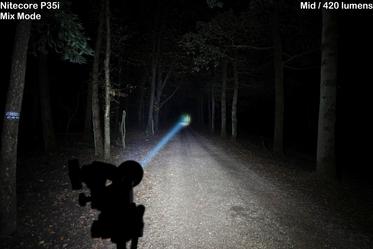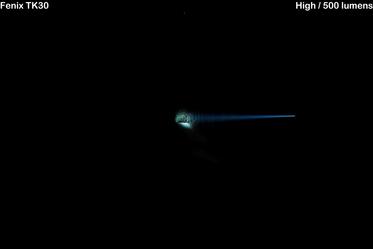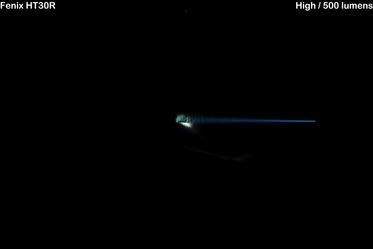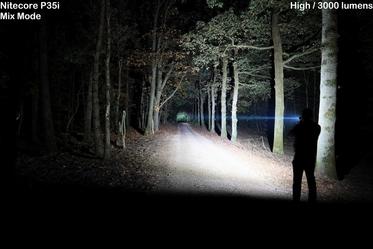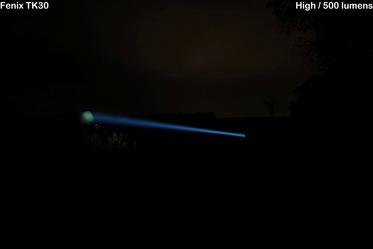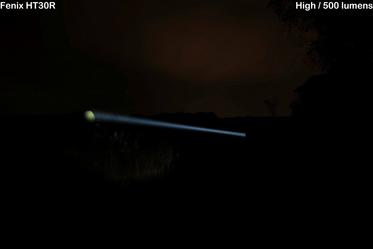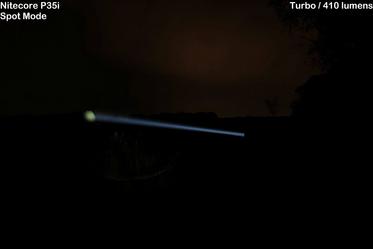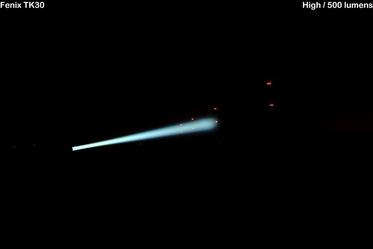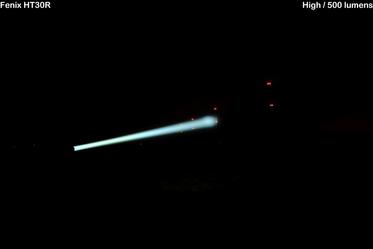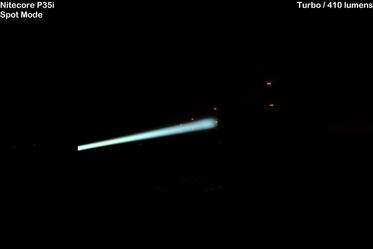LEP torches tested | Expert Review by Koen van der Jagt
Progress is a fact of life in the world of flashlights. Although, if someone had told me ten years ago that it would be possible to have more than a kilometre of effective range with a flashlight small enough to fit inside your coat pocket, I would not have believed them. Thanks to LEP (Laser Excited Phosphor) technology, this is now possible and both Fenix and Nitecore have released flashlights whose beam (factory specification) can reach a distance of one and a half kilometres or even more. About time for an field-test and a comparison between the three LEP flashlights courtesy of Knivesandtools: the Fenix TK30 and HT30R and the Nitecore P35i. I will list the strengths and weaknesses of each flashlight, and of course we will also take the flashlights outside to test them in the dark.
Contents
First impressions
The size of the packaging is proportional to the size of the flashlights. The Fenix brothers come in the familiar cardboard packaging. The contents are a bit basic but adequate: battery, charging cable, lanyard and holster plus some booklets and a spare o-ring. With the Nitecore, the contents are a bit more extensive: the luxury box with magnetic closure looks good. In the P35i's box, everything is neatly arranged, and we find several more accessories that are lacking in the Fenix boxes: a remote control, an adapter for CR123A batteries and a reinforced holster. It's clear that Nitecore put more effort into the packaging.
The Fenix TK30 is clearly the smallest of the bunch, and its design is a little similar to the PD series with the deeper lamp head. As the head's diameter does not differ much from the body, this flashlight fits into almost any trouser pocket or jacket pocket. The lens features a special coating and the laser module is hidden far away beneath thick glass. The main switch is found on the back; metal and copper-coloured, with built-in indicator on the side of the head. Otherwise, the familiar Fenix feeling: excellent build and finish.
The Fenix HT30R looks a lot like the TK30, but it's a lot bigger. Most notable is the lamp head which, due to its larger diameter and increased depth, is quite large compared to the head of the TK30. This light needs a larger pocket to carry it comfortably. It is definitely too big for trouser pockets, so attaching the included holster to your belt is a better option. The body is a bit longer, mainly because both switches are located at the back. On the side of the head of the flashlight, a charging port with a battery indicator is hidden away. In terms of finish and build quality: this flashlight is great!
The Nitecore P35i has a unique look: the light clearly has traits in common with the large Nitecore range, but it looks nicely distinctive. A relatively small body and a very hefty lamp head in which the laser lens is not at the centre. This is because six XP-G3 LEDs (each with its own reflector) are placed around it. The P35i is by far the largest of the three, and it won't fit in most pockets; good thing a sturdy holster is included. The side of the head of the flashlight features the eye-catching informative OLED screen that gives you all the information you need. The P35i also has its main switch at the back and the mode switch on the side of the lamp head. As with Fenix, Nitecore's build quality and workmanship is of a high quality, although I do have a note on the rubber cover of the charging port here: it comes off too easily during use.
When and how
LEP technology has been around for a while, and is commonly used for projection and in the car industry. Applying this technology to the design of a flashlight makes for a neat and compact beam. When the humidity outside is high, the beam will look like a lightsaber. With this beam you can reach incredible distances, allowing you to very precisely pinpoint objects at a distance. This can be very useful in industrial areas, for example. This laser beam is also great for search operations, hunting and for security purposes. The P35i can be used for in many other situations thought, thanks to the wide beam, which can also be used in combination with the laser beam. This flashlight can actually be used in many circumstances, you can even use it as an orienting light inside the house! It's extraordinary, I've never seen anything like it on a similar type of flashlight.
Controls and comfort
Before first use, it's important to fully charge the batteries. The TK30 uses a 21700 battery, which you can charge with the included USB charging cable. You need to open the flashlight in order to charge it. You can also use an 18650 battery, but you do need the optional adapter for this because this power source is a bit smaller in size. The switch on the side of the light features an indicator light. For a few seconds after you turn the light on, this indicator light will show you the battery status. The HT30R is the only one of this trio that works on just one battery: the 21700 battery. On the HT30R, the charging port is hidden in the lamp head; turning it reveals the charging port. A good and waterproof solution thanks to the o-ring that seals it off. A drawback for me is that the battery indicator is also hidden, so you always have to turn the lamp head to check your battery charge. Also, the battery charge display is less accurate than that of the TK30 with only 'sufficient' or 'low' battery power indicated. The Nitecore P35i runs on two CR123A batteries, or rechargeable RCR123A batteries, in addition to the included model-specific battery. These batteries aren't anything to write home about though: with these, you do not have access to the highest light modes and the RCR123As should not be charged inside the flashlight. The P35i's charging port is at the back next to the main switch; I think the rubber detaches a bit too easily. In contrast, the information about battery status and charging status is fantastic on this flashlight thanks to its OLED screen.
For the most part, the interface and the features of the TK30 and the HT30R are very similar. The difference is that the mode switch on the HT30R is located on the back next to the power button. This proves to be more practical than the TK30's switch on the side, especially in the dark. The TK30's switch is quite hard to find by touch, especially when wearing gloves. The indicator light burns for a few seconds after turning the light on, so that makes it easier to find the switch again. Both Fenix lights have two light modes and a strobe mode. The HT30R has a shortcut to this mode, meaning you can also turn the strobe on when the light is turned off. This is a great feature of the HT30R, especially for tactical use. Both lights have a momentary-on function, so it'll light up as long as you're pressing the button half-way down.
In terms of features, the Nitecore P35i is way more elaborate than the two Fenix torches. Still, it remains manageable and that is largely thanks to the OLED screen that shows you exactly which light mode you are using, how much distance you are reaching with it and how much burn time you have left on the battery. The Nitecore has no less than five modes with the laser, five with the wide beam and another three with both light modes together.
The P35i's controls do not differ that much from the Fenix flashlights, although the Nitecore offers a lot more options. When the flashlight is on stand-by, you can set three different modes: Spot (laser), Flood (the six XP G3 LEDs) or Mixed (combination of both light sources). Hold down the mode switch while turning on the Nitecore until you see the desired mode on the screen. You can then switch on the light by half-pressing (momentary) or full-pressing the switch. You can select modes with the side switch, you have five light intensities available in both Spot and Flood and three in Mixed. In each of these three modes, you have access to instant-turbo by holding down the mode switch. In order to protect the battery and the body of the flashlight, the turbo mode will shut down after 30 seconds of use; you can keep an eye on this thanks to the screen. In order to make the controls a bit more user-friendly, the P35i has another option with presets: by holding down the mode switch for more than five seconds, you can choose to show only the lumens or the distance in the display. It's a little easier to read and more convenient for those who only really need to know that specific information. If you want to operate the P35i with one hand, you can connect the remote control to the light. Using the remote, you can switch the flashlight on and off and switch between light modes with the two buttons. With the remote control, you gain the option of using the strobe mode. In order to activate the strobe mode, you need to press down the upper button of the remote. Basically, this self-defence mode does not work without the remote control, which I think is a flaw. The screen gives you information about the remaining burn time, the current mode and level, as well as the amount of lumens and the reach. Even in stand-by mode, you can make this information appear by shortly pressing the mode switch. I definitely see the value of such a screen, especially on a flashlight with this number of modes and features. You will never mistake the light mode or be surprised by an empty battery.
This is what I love about these flashlights
The main advantage of the TK30 is its compact size. In spite of its size, this flashlight really holds its own in this comparison with the other flashlights.
The HT30R's ease-of-use really excels, you can use the controls with one hand. The hidden and waterproof USB charging port is a nice touch. Fenix does offer various practical (optional) accessories. My test showed that the HT30R's beam has the most impressive reach.
The P35i is the most complete flashlight of these three, and is more of an all-rounder than the others. The range of light possibilities, in combination with an informative OLED screen, is what makes this flashlight unique.
This could be better
Even though the TK30 only has three light modes (including strobe mode), switching between light modes when it's dark is not that easy. The switch is difficult to find by touch alone. I solve this problem by turning the flashlight off and on again, so the built-in power indicator shows itself for a few seconds. That's how you find the switch on the side again. A slightly bigger button or continuously-burning indicator would have been nice.
The battery indicator of the HT30R is hidden, which I don't like that much. You also have to press the switch to check the battery status, that just doesn't seem practical to me. The quality of the included holster is nothing to write home about, especially for a flashlight in this price range.
The P35i lacks an attachment clip, and the rubber that closes off the charging port comes off easily. Also, you only have access to the strobe mode when you're using a remote control, while the other Fenix brothers have this defence mode always available.
Value for money?
The price of these lights is a bit of a shock; you can count on two to three times the amount of what a regular Fenix or Nitecore of this size would cost. This means that if you plan to purchase a White Laser light, you should carefully consider what you will use the light for. On the other hand, the flashlights are well worth the money because there's nothing quite like it: another pocket-sized light that is able to reach such distances simply does not exist.
My conclusion
All three of the lights are fantastic products, I discovered during my field-testing. Since they all have their specific features, they have different pros and cons that you can consider.
The TK30 is the only light I carried with me for weeks without it getting in the way. This light is the only one that has a nice 'take-everywhere size' and is easy to operate although you do need two hands. Simple but effective.
The HT30R also fits in your jacket pocket but it's bulkier than the other Fenix, making it a little less manageable. I prefer the controls of the HT30R over the TK30, and the position of charging port is well-chosen. Like the other Fenix, the HT30R's light modes are not extensive: two light modes and a strobe function, that's about it. Fenix does have quite a large range of accessories available including a remote control, filter, diffuser, wall mount and guide rails for mounting on a weapon. This light is a real light cannon: the beam reaches incredibly far!
The P35i will only fit in bigger coat pockets, due to the sheer size of the head of the lamp. In other words, less manageable than the Fenix flashlights, but the most complete by far and with so many cool features! The two-in-one concept makes this light unique; there is no other flashlight with this combination of beam reach and width. High-tech enthusiasts will also get their money's worth thanks to the OLED screen which also proves practical during use. The steep price of the lamp may be a deterrent, although you are actually buying two flashlights in one housing.
Light image and beam shots
This leaves us to a very important aspect of this test: the shots of the light. A distinctive feature and actually logical one too for a White Laser light is its modest output; the lasers give a maximum of 500 lumens, which is not much compared to today's average torch. The strong beam, on the other hand, ensures an enormous range: with a laser, you are barely bothered by stray light, allowing you to fully focus on the long distance. You can clearly see this in the beamshots below, which were taken on a completely dark forest path. The short distance is completely passed-by and the tight beam easily reaches the ascending path several hundred metres away. The difference in beams is also clearly visible: the TK30's slightly shallower reflector provides a wider spotlight; with the P35i, you can best 'modulate' the laser thanks to the five available intensities.
Where the Fenix brothers stick to two light intensities, the Nitecore P35i goes a little further. In flood mode, the light image is completely different: very wide, and no hotspot. Yet even in this mode, the P35i still has a decent range in the higher settings and the turbo mode is impressive.
The mix mode is really something special: you can clearly see the laser pierce through the wider beam. This way, you won't miss anything; the P35i is a broad beam and searchlight all in one!
The same location, now with the lights in hand. It's pitch-black, but the laser allows me to see incredibly far. The effect of the double beam is also clearly visible in the P35i.
At the next location, we try to 'cross' a field by aiming at a treetop over three hundred metres away. Obviously no problem for any of our candidates, although you can see a difference between the bundles. The TK30 has a somewhat broader and less intense spotlight compared to the HT30R. The Nitecore P35i can be seen as a middle ground, in terms of reach.
To see if the flashlights can reach as far as promised, I went to another location: a row of wind turbines in the polder. The distance to the turbine is about 1150 metres. Because it was slightly foggy at the time of testing, you can see a bit more reflection at the light beams, making them look even more like lightsabers. It's clear that all three of the flashlights can easily reach a distance of over a kilometre. The HT30R's beam is most intense at the point in the distance, and is clearly capable of reaching even further.
The images above show the impressive performance of these LEP lights! The HT30R is clearly the winner in terms of beam reach, however, the TK30 holds its own even as it comes in third place. And the TK30 will fit inside your pocket! The P35i is the most special of the test: a broad beam and far-reaching light cannon in one flashlight. Up to you!
Koen van der Jagt
Ever since he could walk Koen has been interested in lights, wires and batteries. As a child he was always working with dyno torches, bike lights and electrical boxes. The krypton and halogen lights were replaced by LED lights. A couple of years ago he discovered the ‘professional’ stuff. His first brands were Led Lenser and Fenix. Photography is also one of his hobbies. In addition to nature and meteorology Koen loves to show others what a light can do and what its beam looks like at night. Koen’s reviews can often be found on forums such as candlepowerforums.com and taschenlampen-forum.de. Throughout the years Koen has collected lights in practically any category: from small and compact to enormous powerhouses.

